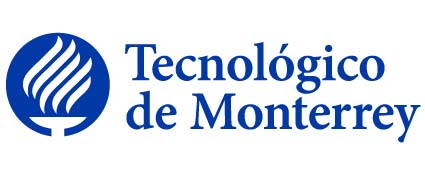
|
Curso en el que se recomienda incorporar el uso de tecnologías de información. |
|||||
|
|||||
Disciplina asociada:Química |
|||||
Escuela:
Ingeniería y Ciencias
|
|||||
Departamento Académico:
Ciencias
|
|||||
Programas académicos: |
|||||
Requisitos:(Haber Cursado Q2013) |
|||||
Equivalencia:Q3004 |
|||||
Acreditables:Q 00001 |
|||||
Intención del curso en el contexto general del plan de estudios: |
|||||
|
Es un curso de nivel avanzado, que tiene la intención de utilizar conceptos avanzados de simetría y orbitales moleculares y el uso de herramientas computacionales para la visualización, evaluación y predicción de las propiedades de compuestos inorgánicos, complejos de coordinación y órgano metálicos. Requiere conocimientos previos de geometría molecular, conceptos de ácidos y bases y fundamentos de mecánica cuántica. Como resultado del aprendizaje se espera que el alumno sea capaz de identificar los elementos y grupo de simetría de una molécula y que use esta información para describir sus orbitales moleculares y hacer cálculos computacionales sobre su estructura y niveles electrónicos. |
|||||
Objetivo general de la Unidad de Formación: |
|||||
| Al finalizar el curso el alumno será capaz de utilizar herramientas computacionales para visualizar moléculas, optimizar su estructura y calcular sus propiedades electrónicas teniendo en cuenta las combinaciones de sus orbitales atómicos de acuerdo a su simetría molecular. | |||||
Técnica didáctica sugerida: |
|||||
| No especificado | |||||
Bibliografía sugerida: |
|||||
|
LIBROS DE TEXTO: * Leach, Andrew R., Molecular modelling : principles and applications , 2nd ed., Harlow ; Mexico : Pearson/Prentice Hall, , 0582382106, 9780582382107 * Jensen, Frank., Introduction to computational chemistry , 2nd ed., Chichester, England ; Hoboken, NJ : Wiley, c2007, , 0470011866 (tela : papel alcalino), 0470011874 (ru´stica : papel alcalino), 9780470011867 (tela : papel alcalino), 9780470011874 (ru´stica : papel alcalino) LIBROS DE CONSULTA: * Cotton, F. Albert (Frank Albert), Chemical applications of group theory, 2d ed., New York : Wiley-Interscience, 1971, , 0471175706 * Miessler, Gary L., Inorganic chemistry , 2nd ed., Upper Saddle River, N.J. ; México : Prentice Hall, c1999, , 0138418918, 9780138418915 |
|||||
Perfil del Profesor: |
|||||
|
(400501)Maestría en Química ; (400501)Doctorado en Química CIP: 400501 |
|||||
|
Course in which it’s recommended to incorporate the use of information technologies. |
|||||
|
|||||
Discipline:Chemistry |
|||||
School:
Engineering and Sciences
|
|||||
Academic Department:
Sciences
|
|||||
Programs: |
|||||
Prerequisites:( Q2013) |
|||||
Equivalences:Q3004 |
|||||
Creditables:Q 00001 |
|||||
Course intention within the general study plan context: |
|||||
|
This is an advanced level course, designed to employ advanced concepts of molecular symmetry and orbits and the use of computer tools to visualize, evaluate and predict the properties of inorganic compounds and coordinating and organometallic complexes. Previous knowledge is required in molecular geometry, the concept of acids and bases and the fundamentals of quantum mechanics. The learning outcome for this course is that the students be able to identify the elements and symmetry groups of a molecule and use this information to describe its molecular orbits and to make computerized calculations regarding its structure and electron levels. |
|||||
Course objective: |
|||||
| Upon completion of this course, students will be able to use computer tools to visualize molecules, optimize their structure and calculate their electronic properties, taking into account the combinations of their atomic orbitals according to their molecular symmetry. | |||||
Teaching and learning tecniques: |
|||||
| Not Specified | |||||
Suggested Bibliography: |
|||||
|
TEXT BOOKS: * Leach, Andrew R., Molecular modelling : principles and applications , 2nd ed., Harlow ; Mexico : Pearson/Prentice Hall, , 0582382106, 9780582382107 * Jensen, Frank., Introduction to computational chemistry , 2nd ed., Chichester, England ; Hoboken, NJ : Wiley, c2007, , 0470011866 (tela : papel alcalino), 0470011874 (ru´stica : papel alcalino), 9780470011867 (tela : papel alcalino), 9780470011874 (ru´stica : papel alcalino) BOOKS FOR CONSULTATION: * Cotton, F. Albert (Frank Albert), Chemical applications of group theory, 2d ed., New York : Wiley-Interscience, 1971, , 0471175706 * Miessler, Gary L., Inorganic chemistry , 2nd ed., Upper Saddle River, N.J. ; México : Prentice Hall, c1999, , 0138418918, 9780138418915 |
|||||
Academic credentials required to teach the course: |
|||||
|
(400501)Master Degree in Chemistry and (400501)Doctoral Degree in Chemistry CIP: 400501 |
|||||